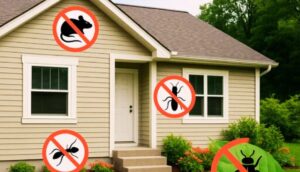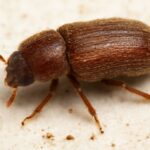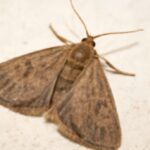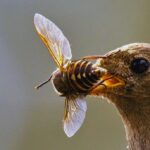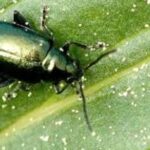Easy & Natural Solutions
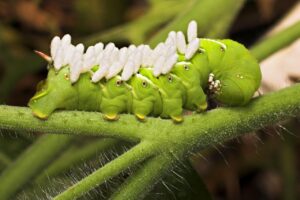
If you’ve ever gone out to your garden and found your tomato plants looking half-eaten overnight, you might have met the tomato hornworm. These large, green caterpillars can strip a plant in days, leaving frustrated gardeners in their wake.
But don’t worry—getting rid of tomato hornworms isn’t as hard as it looks. With the right steps, you can stop them quickly and keep your garden thriving all season.
In this guide, we’ll cover how to identify, control, and prevent hornworm infestations without stressing your plants—or you.
What Are Tomato Hornworms?
Tomato hornworms are the larval stage of the five-spotted hawk moth. They get their name from the horn-like projection on their rear end. Despite their intimidating size—often up to 4 inches long—they are soft-bodied and can be easily removed by hand.
They primarily feed on plants in the nightshade family, such as:
- Tomatoes
- Peppers
- Eggplants
- Potatoes
While they’re part of nature’s cycle, their appetite makes them a serious pest for vegetable gardeners.
How To Identify Tomato Hornworms

Before you can remove them, you need to know what to look for. Here are the signs:
Chewed leaves and stems — Often, the top leaves are missing.
Defoliation overnight — Plants can look fine one day and ragged the next.
Dark droppings (frass) — Found on leaves or soil beneath the plant.
Camouflaged caterpillars — They blend in with stems and leaves.
Pro tip: Hornworms are easiest to spot in the early morning or evening when they’re actively feeding.
Step-By-Step Guide: How To Get Rid Of Tomato Hornworms
Let’s break this down into effective, garden-friendly methods.
1. Handpicking
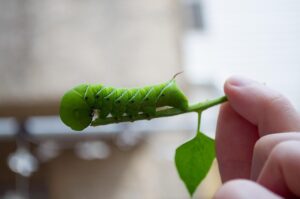
The simplest method is to remove them by hand.
Put on garden gloves.
Inspect plants leaf by leaf.
Pick off hornworms and place them in a bucket of soapy water to kill them.
Handpicking works best when the infestation is small.
2. Encourage Natural Predators
Nature has its own pest control agents.
Parasitic wasps lay eggs on hornworms. The larvae then consume the pest from the inside out.
Birds like robins and mockingbirds also feed on them.
Avoid using broad-spectrum insecticides, which can harm these helpful predators.
3. Neem Oil Spray

Neem oil is an organic pest deterrent.
Mix according to package directions.
Spray affected plants thoroughly, covering leaves and stems.
Neem disrupts the feeding cycle, making it harder for hornworms to survive.
4. Bacillus thuringiensis (Bt)
Bt is a naturally occurring bacterium that targets caterpillars.
Apply in the evening for best results.
Harmless to humans, pets, and beneficial insects.
Hornworms ingest the bacteria and die within a few days.
5. Till Your Soil

Hornworm pupae overwinter in the soil.
In fall and early spring, till your garden to expose it to predators and the weather.
This reduces the chance of new caterpillars hatching.
6. Companion Planting
Planting certain flowers and herbs can deter hornworms.
Marigolds and basil can naturally repel them.
This also attracts pollinators, boosting plant health.
7. Row Covers
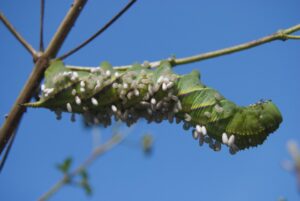
Protect your young plants early in the season with lightweight fabric covers.
Keeps adult moths from laying eggs.
Remove the covers when plants begin to flower to allow the pollination process to occur.
8. Inspect Nightly
Hornworms feed most at night.
Use a flashlight to check plants after dark.
This makes it easier to catch them in action.
Organic vs. Chemical Control: Which Should You Choose?
Organic methods like handpicking, Bt, neem oil, and predator attraction are safest for you and your garden’s ecosystem. Chemical insecticides can work, but they also risk harming pollinators and beneficial insects.
If you must use chemicals, choose targeted products labeled for caterpillars and follow directions carefully.
How To Prevent Tomato Hornworms Long-Term

Rotate crops each year to disrupt their life cycle.
Remove garden debris at season’s end.
Use companion planting to repel pests naturally.
Keep plants healthy with proper watering and fertilization.
The healthier your garden, the better it can withstand occasional pests.
10 Frequently Asked Questions About Tomato Hornworms
1. What causes tomato hornworms to appear?
They come from eggs laid by the five-spotted hawk moth. The moth is attracted to nightshade plants like tomatoes, peppers, and eggplants.
2. Are tomato hornworms harmful to humans?
No. They don’t bite or sting. They’re just destructive to plants.
3. How big can a tomato hornworm get?
They can grow up to 4 inches long before turning into a moth.
4. How do I find hornworms when they are camouflaged?
Look for missing leaves, droppings, and damaged stems. Inspect plants early in the morning or evening when they’re active.
5. Can tomato plants recover after hornworm damage?
Yes, if caught early. Remove the pests and give the plant proper care to help it rebound.
6. Will frost kill hornworms?
Yes. They can’t survive freezing temperatures, but they may overwinter as pupae in the soil.
7. Is Bt safe for vegetables?
Yes. Bt only affects caterpillars and is not harmful to humans, pets, and beneficial insects.
8. Do hornworms turn into butterflies?
No. They turn into large moths called five-spotted hawk moths.
9. How fast do hornworms grow?
Very fast. They can reach full size in just 3–4 weeks.
10. What if I see a hornworm with white cocoons on its back?
Leave it alone. Those are parasitic wasp cocoons. The wasps will kill the hornworm and help control the population.
Conclusion: Win the Battle Against Tomato Hornworms
Tomato hornworms might be impressive in size, but you have the advantage. By spotting them early, using safe removal methods, and encouraging natural predators, you can protect your plants without harsh chemicals.
Remember, prevention is your best defense. Keep your garden clean, rotate crops, and plant companions like marigolds and basil.
With consistent care and a watchful eye, your tomato plants can stay healthy, productive, and hornworm-free all season long.



